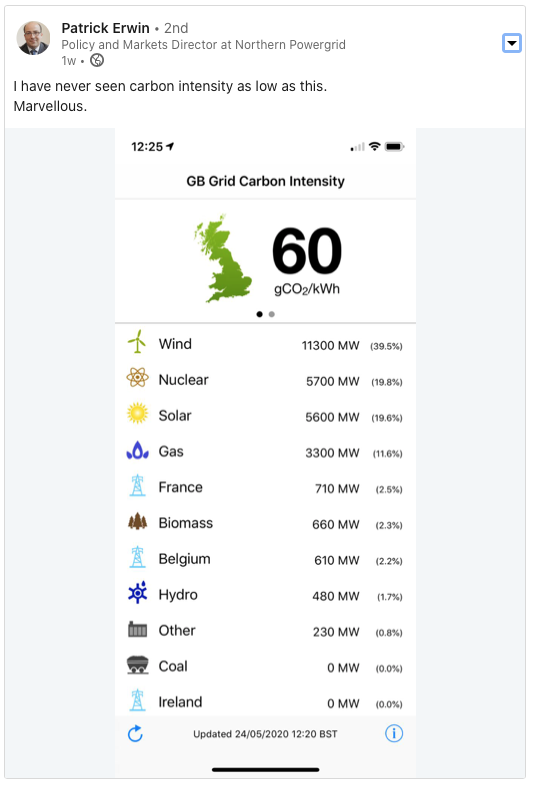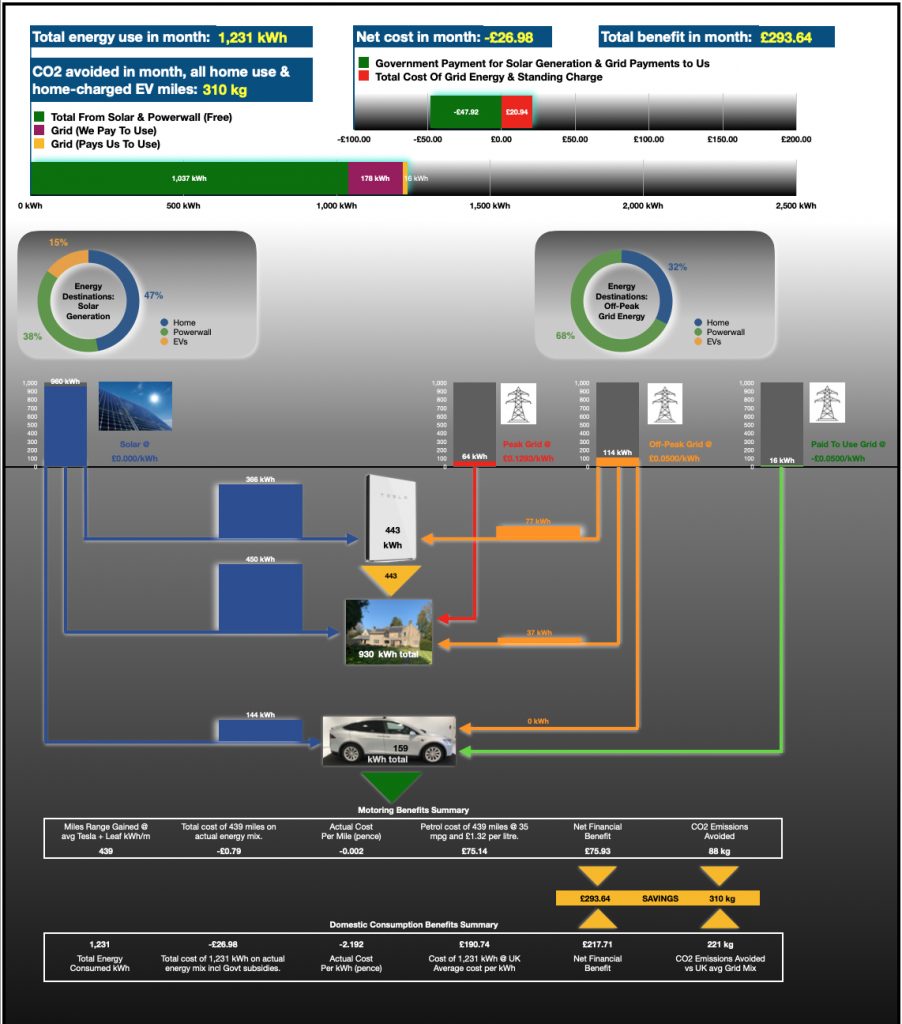This entire post is available as a downloadable PDF here, if you prefer.
There have been some memorable scorelines over the years. The two most important of all time being, of course, Nottingham Forest 1 : Malmö 0 and Nottingham Forest 1 : Hamburg 0, to win the 1979 and 1980 European Cup finals. And, yes, I’d really like East Fife 4 : Forfar 5 to actually happen (and not on penalties, 22/07/2018 doesn’t count).
Another result that really matters occurred in May 2020. A couple of things came together. The sunniest spring on record in the UK, with May’s MetOffice stats confirming a stonking 269.6 hours of bright sunshine in East and North East England, our area. But, on the downside, the Global Zombie Apocalypse Megadeath coronavirus pandemic continued to do its thing.
So, whilst global megadeath was an unreservedly bad thing, on the brighter side, May 2020 gave UK (and the rest of the world) a glimpse of how a low carbon future will look, painting in even more vibrant colours the picture that had begun to emerge in April, the first full lockdown month.
Pandemic meant pandemonium for the economy. And that meant massively lower demand for energy due to shutdowns for business and lockdowns for the people. By consequence, that also meant massively less mileage driven on the roads.
Unless, when it came to driving, you were in the minority which thought might be a good plan to drive a car load of infected people 200+ plus miles from London to County Durham, and then take a 50 mile round trip ‘to test your eyesight’ before driving back to London to lend your moral authority and public credibility to the Government’s campaign imploring citizens to act responsibly. Honestly? You couldn’t make it up for a satirical show.
Now, come to think of it, where’s Malcolm Tucker when you need him? I can barely imagine the weapons-grade Glaswegian invective that would have eviscerated any Downing Street adviser who had decided, erm, to drive a car load of infected people 200+ miles… You get the picture. Over to you, Armando.
Simultaneously with massively lower demand, the sun helpfully shone and the wind generously blew, which led, at 12:20 on 24 June, to a record low carbon generation mix of only 60 g CO2 per kWh) at National Grid level. You can get the Grid Carbon app here.

A tip of the hat to Patrick Erwin for spotting this and posting on LinkedIn. Responding on that platform, it occurred to me that this was a very clear view of the COVID/Carbon connection in action.
How curious it is that something as ruthlessly fatal to humans is actually brilliant for the health of humankind’s home planet.
Basic message: if everybody and everything slows down, the generation mix goes supergreen.
The real, structural, challenge will be keeping it green when the economy re-ignites.
So how did May 2020 play out at domestic level? The calcographic below summarises how it went for us. We hope you like the new graphic style. Click the image to get a zoomable high resolution PDF.

For those who prefer narrative to calcographics, the main highlights of the month’s performance are summarised below:
- We used 1,231 kWh used in total, of which 960 kWh (78%) was solar. The remaining 194 kWh were grid supplies using Octopus Energy’s ‘Octopus Go’ tariff, which incentivises consumption of dirt-cheap ultra off-peak energy for recharging our Tesla Powerwall and two EVs between 00:30 and 04:30 in the small hours period of very low grid demand. The month included seven energy-intensive kiln firings for Anne’s ceramics business, which we timed to soak up solar surplus and energy stored in the Powerwall.
- We only drove 439 miles in the EVs in the month, due to lockdown. 100% of those miles were fuelled with our own solar energy plus (a tiny) 16 kWh of zero carbon grid energy that Octopus actually paid us to use in order to keep renewable generators switched on during the record low demand at 05:00 – 07:00 on Bank Holiday Sunday morning.
- Including the small quantity of ‘get paid to use’ kWh over the Bank Holiday, and the minor Government subsidy for solar generation, the results were as follows.
- Domestic consumption actually cost minus 2.192 pence per kWh, giving a negative cost for domestic energy consumption of minus £26.98 in the month. If the same kWh had been purchased at the UK average cost per kWh, we would have paid £190.74. Hence the saving versus UK average for domestic consumption is £217.71.
- The 439 EV miles actually cost us minus 79p in electricity in total (-£0.79). Using our standard calculations, the petrol cost of those 439 miles would have been £75.14 in total. Hence the overall financial saving versus a conventional car was £75.93.
In total, in May 2020, we met all our domestic electric requirement and drove 439 miles for an actual cost of minus £26.98. That is to say we were just under £1 a day better off for using energy, whilst causing zero emissions.
The total saving, versus the UK average cost of all electricity used and driving 439 miles in a petrol car, was £293.64.
That energy performance also produced a total saving of 310kg in carbon dioxide emissions versus the carbon impact of using grid energy at UK Grid average carbon intensity and fuelling and internal combustion engine (ICE) car. It’s worth noting that the emissions saving was lower than usual, due to the lower EV mileage in the month. This is because it is miles driven in EV, versus the carbon impact of covering those same miles in an ICE, which causes the greatest reduction in CO2.
So, there you have it; a brilliant result!
Covid 19 : Carbon Dioxide 0
[…] By Dr. Alan James: Partner, Expert Alliance, blogging on greentech at electrifylife.co.uk […]